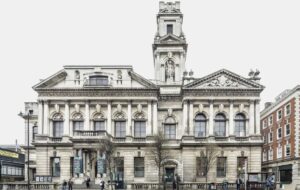|
|
||
|
Charles Holland on why we should remember the brilliant, melancholy critic with unpredictable enthusiasms Ian Nairn was the world’s first jet-propelled architecture critic. Not just in a metaphorical sense – although in Words In Place, their new biography of Nairn, Gillian Darley and David McKie describe his writing as having “lit up the sky” of architectural criticism – but literally, too. Nairn learned about the English landscape while he was an RAF pilot, setting out on unofficial architectural reconnaissance missions in search of churches and obscure ruins. (At one point he used a Gloster Meteor to find a forgotten building by Sir John Soane.) This, according to Darley and McKie, was how the self-educated Nairn learned his trade, before talking himself into a job at the then highly influential Architectural Review in the early 1950s. It also sums up the contradictory temperament of the man who became a much-loved writer and broadcaster on architecture. There is a revealing moment in his 1973 TV series Nairn Across Britain, where he stops to take in a view of the Dunstable Downs and invites us to admire the landscape stretched out before him. But what has really caught his eye are the gliders that make use of the spot’s particular topography as they bob along the thermals over the Downs. The camera lingers for an improbably long time, taking in its calm and serene beauty. The scene reminds us that Nairn became a television star (and an unlikely one, even then) in an era with much less pressure to entertain and excite. It also captures Nairn’s best qualities as a critic – his ability to surprise us with the breadth of his enthusiasms. Nairn celebrated both modernity and tradition and could see beauty not only in gliders, but also in power stations, railways and infrastructure. Nairn floated gloriously free of the style wars that periodically consume British architecture, offering instead a passion for buildings and places. Perhaps here is the reason that his charms have, on the whole, eluded architects. He was a writer’s writer, admired mostly by non-professionals and by the public. Architects tend to prefer their criticism linked more directly to a design philosophy; they also tend to care less about style and readability. Nairn is near useless if you are looking for directions on how to design, but brilliant if you are interested in looking at existing buildings and what they mean.
Darley and Mckie’s book is organised around key moments in Nairn’s career, each introduced by contemporary admirers including Owen Hatherley and Jonathan Meades. It begins with Outrage, his diatribe against “subtopia” and includes chapters on his documentaries, his collaboration with Pevsner on the buildings of Surrey and Sussex, his time in America and his classic guide book Nairn’s London. It is not a straight biography but we learn much about Nairn’s complex and tragic personality on the way. Nairn was a melancholic introvert, a heavy drinker who sadly let his talent slip towards the end and who died far too young. Watch his films, especially Nairn on the Orient Express, and you can witness someone on the verge of cracking up with despair at the state of the world around him. Read Nairn’s London and you will find someone habitually drawn to the marginal and the overlooked. He praised the unloved elevation and the forgotten backstreet, preferring, for example, the passage behind Hawksmoor’s St George’s in the East to the building itself. He even fetishised the city’s dirt, eulogising the sooty postwar St. Paul’s over the later cleaned-up version. In valorising these places he must have known that he would be forever frustrated, forever left fighting lost causes. He could articulate his enthusiasms like no other critic. Take his description of the extraordinary buildings at 33-35 Eastcheap in the City of London. Walk past these today and you might be forgiven for dismissing them as a typically eccentric piece of late-Victoriana. In Nairn’s London, he describes them as “The scream you wake up on at the end of a nightmare.” Once you’ve read that you’ll never look at them the same way again. And that, pretty much, was Nairn’s point. Ian Nairn, Words in Place, edited by Gillian Darley and David McKie, Five Leaves Press, £10.99
|
Words Charles Holland |
|
|
||


















